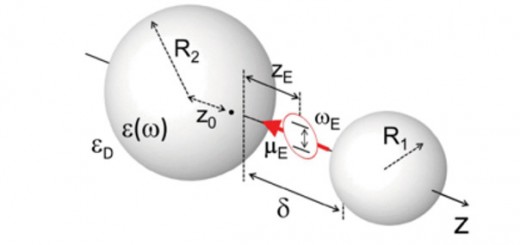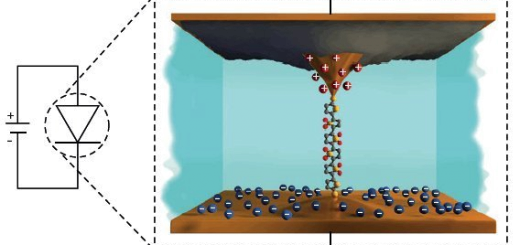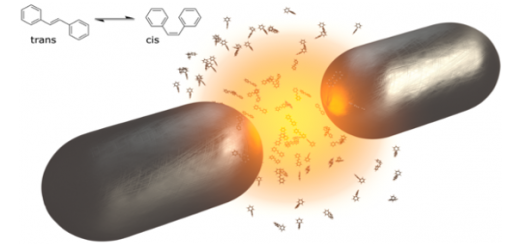Uncoupled Dark States Can Inherit Polaritonic Properties

(a) Numerical results for the real (red) and imaginary parts (black) of the eigenmode frequencies of the metallic nanoparticle. (b) Intensity of the electric field for the corresponding eigenmodes, which are labeled by the mode index n.
Article: published in Physical Review Letters by Carlos Gonzalez-Ballestero, Johannes Feist, Esteban Moreno and F. J. García-Vidal, Department of Theoretical Condensed Matter Physics and IFIMAC researchers.
The phenomenon of collective strong coupling emerges when an ensemble of quantum emitters interacts strongly enough with an electromagnetic field. In this regime, hybrid light-matter states, the so-called polaritons, are created. These hybrid modes have the most advantageous properties of their light and matter components and this is why they are usually considered as feasible ingredients in future quantum technologies. Apart from these polaritons, within the Hilbert space there are also many dark states whose origin stems from excitations within the quantum emitters that are not coupled to the light field. Up to date, these modes have been dismissed as it is thought they do not exhibit the promising properties of polaritons.
In this work we have demonstrated that this is not the case and that dark states can indeed inherit the delocalized character of the polaritons. We show that these unexpected properties only appear when the electromagnetic field displays a discrete spectrum. When the photonic structure is extended and its electromagnetic spectrum is continuous, the customary picture described above of dark states being localized is fully recovered. We also demonstrate, both numerically and analytically, that dark states can even have superior delocalized properties than polaritons when the main loss mechanism in the system is associated with the light field. [Full article]



















